Aluminum Paste for AAC Block is also known as AAC aluminium powder paste and aluminium powder paste. The key use of aerated aluminium powder for aerated concrete is the reaction between aluminium powder, silica and quicklime during production, releasing the vapour to form a porous structure inside the aerated concrete.
Aluminum Paste for AAC Block is also known as AAC aluminium powder paste and aluminium powder paste. The key use of aerated aluminium powder for aerated concrete is the reaction between aluminium powder, silica and quicklime during production, releasing the vapour to form a porous structure inside the aerated concrete.
AAC is a new type of wall construction material, which is unique in that it is a very lightweight new type of building wall material for external wall insulation. Aerated concrete technology began 100 years ago, China’s technology started late, lagging behind overseas for 40 years. However, the development of China’s aerated concrete industry is indeed very rapid. China’s aerated concrete technology strength has reached the international advanced level.
Aluminum Paste for AAC Blocks is also known as AAC Aluminium Paste and Aluminum Paste Paste. The key use of aerated concrete aerated Aluminum Paste is the reaction between Aluminum Paste, silica and quicklime during the production process, releasing the vapour to form a porous structure inside the aerated concrete.
In the mixing link in the production of AAC blocks, the aerated add Aluminum Paste paste mixing tank, fully stirred into the Aluminum Paste paste metering scale, and finally put into the pouring mixer with lime, gypsum, coal ash and other raw materials. Aluminum Paste in the Aluminum Paste can be embodied with the alkaline substances in the aerated concrete pulp to release H2, resulting in bubbles, so that the aerated concrete pulp pescetto caused by the porous structure.
As a result, the manufacture of aerated concrete blocks generally weigh 500-700kg/m3, only equivalent to 1/4-1/5 of clay bricks, 1/5 of concrete is one of the lighter mix. Compared with ordinary brick and concrete structure building, self-weight relief of more than 40 per cent.
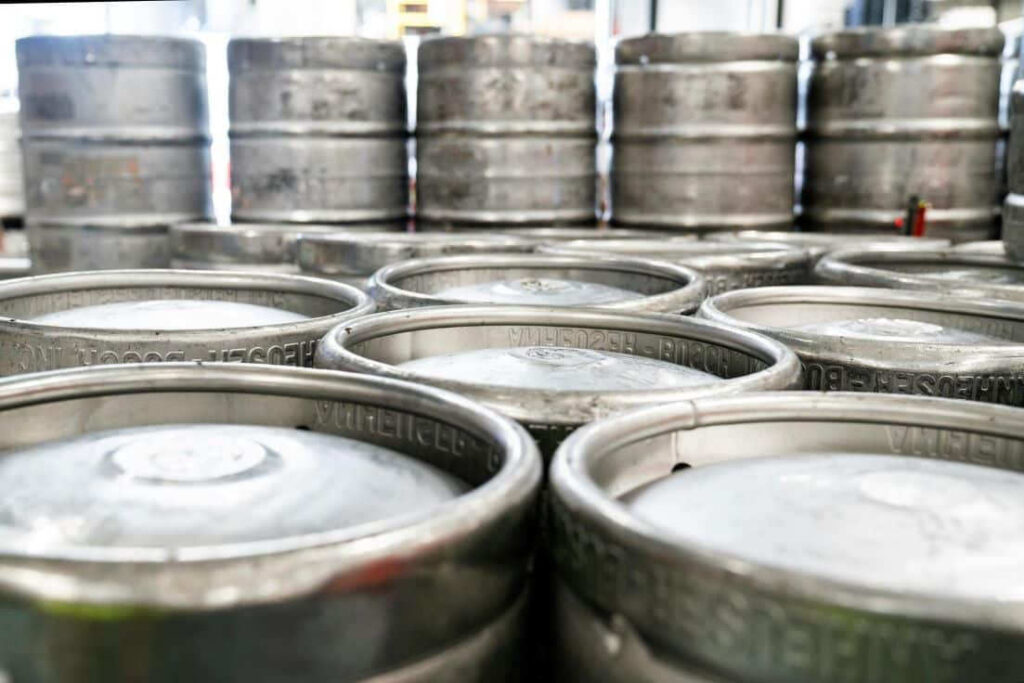
AAC is to be made of lightweight porous silicate commodities by taking silica materials (sand, coal ash, silica tailings, etc.) and calcium materials (lime, cement) as raw materials, mixing with aerating agent (aluminium powder) and making lightweight porous silicate commodities based on the processes of seasoning, mixing, pouring, pre-cultivation, cutting, autoclaving, and maintenance.
Aerating contains a large number of symmetrical and fine pores, so it is called aerated concrete.
Essentially, all AAC, including AAC blocks, foamed concrete and concrete with air-entraining agent.
Narrowly defined as AAC blocks. Generally classified according to the type of raw materials, process load-bearing efficacy.
According to the appearance, AAC can be divided into various specifications of blocks or plates.
Based on raw materials, most of the AAC has three kinds: (cement, lime, coal ash aerated brick); (cement, lime, sand aerated brick); (cement, slag, sand aerated brick)
AAC can be divided into five types according to its use: non-load-bearing blocks, load-bearing blocks, insulation blocks, wall panels and roofing.
Aerated concrete is characterised by light density, high thermal insulation performance, good sound absorption and certain strength processability, and is one of the earliest and most widely used lightweight wall panel materials in China.
Scope of use of AAC
The production and application of non-load-bearing blocks is the most extensive, the bulk density is generally 500 kg/m3 and 600 kg/m3, mainly used for structural masonry and partition walls, not load-bearing; load-bearing blocks have a bulk density of 700 kg/m3 and 800 kg/m3, the project is load-bearing after special structural treatment; thermal insulation blocks have a general bulk density of 300 kg/m3 and 400 kg/m3, mainly used for building exterior walls, the bulk density of 300 kg/m3 and 400 kg/m3, mainly used for building exterior walls, the bulk density of 300 kg/m3 and 400 kg/m3, mainly used for building exterior walls, the bulk density of 400 kg/m3, mainly used for building exterior walls. m3, mainly used for building exterior wall insulation; roof and wall panels are reinforced aerated concrete panels, with different hoops according to different uses.
1、High-level architecture building. Years of practice has proved. The use of AAC in high-rise architecture buildings is economical and reasonable, especially with the inner wall of the block base wall, which has gained general acceptance in the society.
2, Earthquake-resistant geographical buildings. Because of the light weight of AAC, its building seismic force is small, which is beneficial to earthquake resistance. Comparison with the brick building, in the same building and seismic conditions, seismic design defence level and the level of earthquake damage is too big a difference. If the brick building to do 7 degrees of defence, will be destroyed. At this time, the aerated concrete building only to do 6 degrees of defence, will not be destroyed. 1975 Haicheng earthquake period, more than 30 porous concrete buildings slightly damaged, while the neighbouring brick buildings were seriously damaged; 1976 Tangshan earthquake period, Beijing Baijiazhuang, a five-storey aerated concrete loaded building weighing only 700kg/m2. At that time, the seismic intensity of the earthquake was 6 degrees strong, there is no new gap after the earthquake. However, large diagonal cracks occurred in the lower side of the four-storey mixed structure house at 50m.
3, The building in the cold region. AAC has a good thermal insulation effect. The thermal insulation effect of its 200mm thick wall is equivalent to the thermal insulation effect of 490mm thick wall, because of its construction in the cold region of the economic benefits of the building is outstanding and competitive.
Fourth, soft plastic roadbed construction. Under the same roadbed conditions, the number of layers of AAC building can be increased, economically favourable. The main disadvantage of aerated concrete is to collect large, low elasticity abrasive, fear of cold. Thus, aerated concrete is not suitable for the following sites, temperature greater than 80 ℃, acid and alkali environmental damage; long-term wet environment, especially in the cold region.
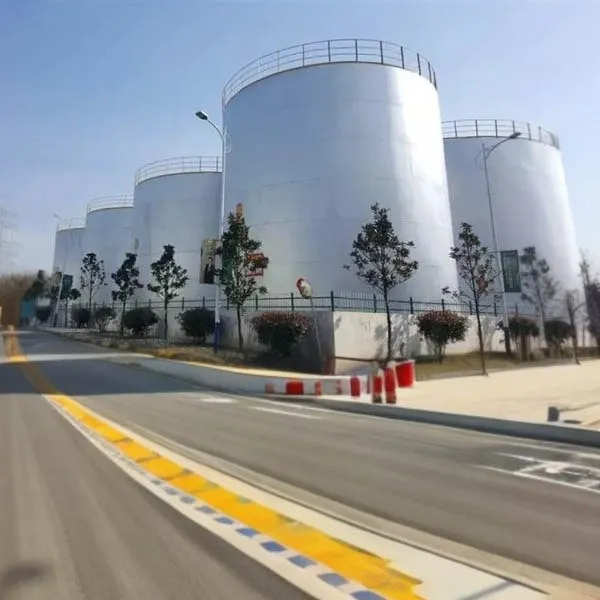
The amount of Aluminum Paste used depends on the volume density of AAC. When using Aluminum Paste of the same quality, the higher the volume density of the product, the lower the amount of Aluminum Paste used.
In fact, we can accurately calculate the amount of Aluminum Paste used based on the volume density of the product:
Based on the reaction formula of Aluminum Paste replacing hydrogen in water in an alkaline environment:
2AL 3Ca(OH)2 6H2O-3Ca.AI2O3.6H2O 3H2↑
According to statistics, 2 grams of pure metal aluminum can produce 3 grams of H2, but under standard conditions, the volume of 1 gram of gas is 22.41, and the atomic weight of aluminum is 27. Therefore, the gas production of Aluminum Paste is:
Vo=22.4X1.241/[3/2X27]g
According to the above formula, the gas production of Aluminum Paste under various conditions can be calculated using the vapor state equation (V1/T1)=(V2/T2):
The volume of AAC can be simplified into two parts: one is the approved volume of the base material, and the other is the pore volume formed after the Aluminum Paste is gasified. According to the pore volume, the amount of Aluminum Paste can be calculated:
M aluminum=V pore/(V2K)
In the type: M aluminum-the amount of Aluminum Paste used in the company’s products (g/cubic);
K—-active aluminum content
The pore volume is equal to the product volume, combined with the amount of materials and their respective proportions to reduce the volume of raw materials and water). However, during the production process, the gas production is affected by many factors such as temperature changes and slurry consistency. According to theoretical calculations, the amount of Aluminum Paste is impossible and unnecessary. The factory selects based on social experience and adjusts at any time. Generally speaking, when using aluminum paste, the aluminum paste is added at a ratio of 8/10,000 dry materials to produce 600kg/cubic aerated concrete.
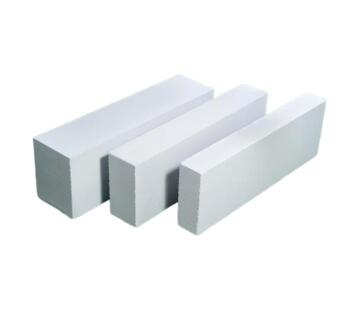

| اسم المنتج | المحتوى الصلب (%) | الألومينا النشطة (%) | الكثافة السائبة | متوسط حجم الجسيمات (D₅₀) | مناسب لـ AAC |
|---|---|---|---|---|---|
| DEG-60 | 70% | ≥96 | 0.15 | 58-62 | <600 |
| DEG-40 | 70% | ≥94 | 0.15 | 36-42 | <500 |
| DEG-35 | 70% | ≥94 | 0.15 | 33-35 | <400 |
| DEG-25 | 70% | ≥94 | 0.15 | 25-27 | <400 |
| DEG-18 | 70% | ≥92 | 0.11 | 17-19 | <350 |
AAC made of Aluminum Paste can not only react with water to cause H2, and explored the strength of aerated concrete, mainly contains the pore structure of AAC. To form an ideal pore structure, the aerating of Aluminum Paste must be consistent with the thickening and hardening of aerated concrete paste. This requires that the Aluminum Paste not only has more metallic aluminium content, but also has a certain particle size and particle shape to ensure a moderate aerating profile.
(1) Aerating capacity of Aluminum Paste
The aerating capacity of Aluminum Paste lies in the amount of Aluminum Paste used in AAC. The gassing quantity of Aluminum Paste is the volume of H2 produced by unit mass of Aluminum Paste and fully reacted under the standard state. 1g of metal aluminium, the theoretical value under the standard state, obviously, the more metal aluminium content in Aluminum Paste, the more gassing quantity, the more vital aluminium in aerated concrete paste (can participate in gassing reflection, resulting in aluminium hydroxide, which is known as vitality aluminium; in Aluminum Paste paste, the other index is different from vitality aluminium is the solid point), the actual In the Aluminum Paste paste, another index is solid state point), the actual gas generation is more. Therefore, the Aluminum Paste paste used for aerated concrete is different from that produced with higher purity aluminium ingot (purity above 98%). Aluminum Paste metal aluminium content is generally required to be not less than 98%, dynamic aluminium content of not less than 89% (Aluminum Paste paste is slightly lower).
(2) Aluminum Paste particle size
The particle size of Aluminum Paste does not affect the amount of gas, but affects the speed of gas. The denser the Aluminum Paste, the larger the specific surface, the larger the surface area to participate in the embodiment. As a result, the faster the duration of gas generation, the faster the speed, the faster the gas generation proceeds.
Generally speaking, Aluminum Paste according to the production of strict quality manipulation, particle size is generally maintained within a certain range; however, due to the differences between the production enterprises and production processes, the actual particle size varies greatly, which becomes one of the important factors affecting the reliability of pouring.
(3) Particle shape
The shape of Aluminum Paste particles has an important influence on the characteristics of Aluminum Paste gas. There are two kinds of Aluminum Paste particle shapes, one is liquid and irregular needle-like, should be produced in the spraying link; the other is broadleaf or irregular fish scale, produced by the spray powder crushing. Liquid spray powder chemical activity is very low, in the AAC slurry basically does not gas. The fundamental reason is that this type of Aluminum Paste is a high temperature molten liquid is compressed air blown into particles, air slowly in the refrigeration link, significant oxidation, resulting in dense alumina purification film, seriously impede the chemical reaction, according to the grinding of Aluminum Paste particles, resulting in bias flat fish scales, there are more new metal surface, and subsequently elevate the area of hair gas reflection. In addition, in the grinding session, the Aluminum Paste particles are milled, impacted, cold rolled, extended and ruptured, which flattens the Aluminum Paste particles with a lot of irregular edges. The metal lattice at the irregular edges is bound to produce more distortions, deformations and cracks into more energetic chemically optimistic areas, which drives the Aluminum Paste to have better gassing characteristics.
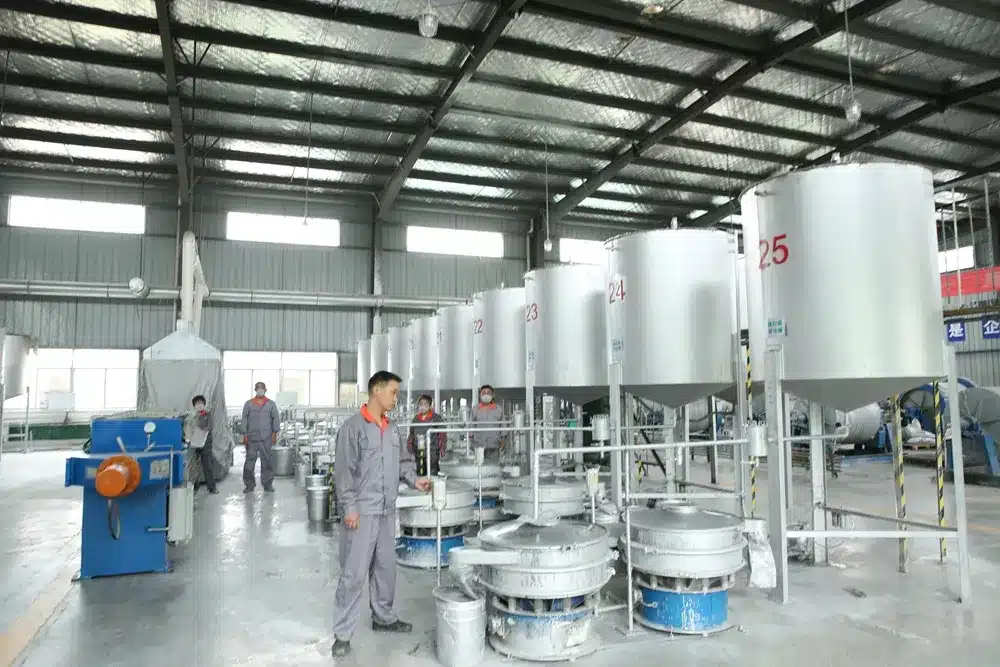
Introduction of Aluminum Paste for AAC Block:
Aluminum Paste for AAC Block is a high-performance, safe, environmentally friendly, and cost-effective construction additive widely used in the production of foamed concrete, ALC panels, aerated concrete, and other building materials.
Key Features of Aluminum Paste for AAC Block:
The main use of aerated Aluminum Paste in aerated concrete is to cause chemical changes in the production process of Aluminum Paste, silica and lime powder, releasing vapour to produce a porous structure inside aerated concrete.
Thus, Aluminum Paste is vital in the production process of AAC block.
Applications of DEG Aluminum Paste:
التعليمات:
مواصفات التعبئة والتغليف:
مبدأ عمل معجون الألومنيوم DEG:
Aluminum Paste for AAC Block forms a protective film to regulate the oxidation rate of aluminium powder and prolong the aeration time. DEG also reduces the surface tension of aluminium powder, making it easier to disperse in concrete and forming a uniform and fine air pore structure.
Aluminum Paste for AAC Block is a high-performance, safe, environmentally friendly, and economical construction additive that has become a new favourite in the modern construction industry.

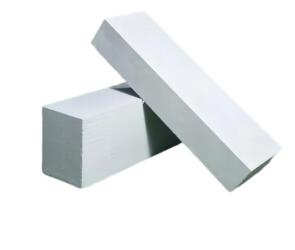
نقترح عليك أن تتواصل معنا بشكل كامل قبل الشراء، وسننظر بالتأكيد في جميع الجوانب ونقدم لك خطة أسعار عادلة ومعقولة. باختيارك لنا، ستحصل على أفضل منتج وأفضل قيمة مقابل نقودك.
Choosing the right size of product gives you the best value for money. Our Aluminum Paste for AAC block is available in a wide range of particle sizes and purities, with prices varying by specification. By communicating your needs in detail and choosing the right size, you can get the best value for your money.
كلما زادت الكمية المشتراة، انخفض سعر الوحدة. تسمح لنا الطلبيات بالجملة بتقاسم تكاليف الإنتاج والتشغيل بشكل أفضل، لذلك يسعدنا تقديم أسعار مخفضة للمشتريات بالجملة.
سيؤثر توقيت وطريقة الدفع التي تختارها أيضاً على السعر. على سبيل المثال، يمكن أن يؤدي الدفع مقدماً بالكامل إلى الحصول على سعر أفضل، لأنه يقلل من تكلفة رأس المال. يُرجى مناقشة خيار الدفع الأنسب مع فريق المبيعات لدينا.
كما أن النقل والخدمات اللوجستية من العوامل التي تؤثر على التكلفة الإجمالية للملكية. فوسائط النقل والوجهات المختلفة تترتب عليها تكاليف شحن مختلفة. يجب أيضًا أخذ الرسوم والتأمين والتكاليف الأخرى في الاعتبار. من خلال حساب هذه العوامل قبل الشراء، يمكنك تقدير التكلفة الإجمالية بدقة أكبر.
تُعد عملية إنتاج عجينة الألومنيوم الهوائية (الطين)/المسحوق الهوائي أمرًا بالغ الأهمية في تحديد جودة المنتج النهائي وأدائه. سيتناول هذا الفصل بالتفصيل تدفق الإنتاج والتقنيات الرئيسية ونقاط التحكم في كل مرحلة من مراحل عملية تصنيع عجينة الألومنيوم الهوائية (الطين)/المسحوق لمساعدة القراء على فهم أفضل لتصنيع هذه المادة الهامة.
يتضمن تدفق إنتاج عجينة الألومنيوم الهوائية (الطين)/المسحوق الهوائي عادةً الخطوات الرئيسية التالية:
قبل بدء الإنتاج، يعد اختيار المواد الخام وإعدادها أمرًا بالغ الأهمية. إن الرئيسية تشمل المواد الخام مسحوق الألومنيوم والمواد المضافة (مثل ثنائي الفينيل متعدد الكلور ومشتتات الهواء، إلخ)، ومكونات أخرى. يعتمد اختيار مسحوق الألومنيوم عادةً على حجم جسيماته ونشاطه ونقاوته. يمكن لمسحوق الألومنيوم عالي النشاط أن يولد المزيد من غاز الهيدروجين عند التفاعل مع الماء، وبالتالي تحقيق تأثيرات أفضل لتوليد الغاز. يحتاج اختيار المواد المضافة إلى النظر في دورها في عجينة الألومنيوم الهوائية، مثل تحسين السيولة وتعزيز التفاعل.
يتم خلط مسحوق الألومنيوم المحضر والمواد المضافة في بعض التناسب. عادةً ما تستخدم هذه الخطوة معدات خلط عالية الكفاءة لضمان توزيع المكونات بشكل موحد وتجنب التكتل. يجب التحكم بصرامة في وقت الخلط وسرعته أثناء عملية الخلط لضمان مزيج كافٍ من مسحوق الألومنيوم والمواد المضافة، مما يضع أساسًا جيدًا للتفاعلات اللاحقة.
يجب طحن المواد المخلوطة للوصول إلى حجم الجسيمات المحدد. هذه الخطوة ضرورية لتحسين نشاط مسحوق الألومنيوم. يمكن أن يؤدي استخدام المطاحن الكروية أو أنواع أخرى من معدات الطحن إلى تقليل حجم الجسيمات بشكل فعال وزيادة مساحة سطح مسحوق الألومنيوم، وبالتالي تعزيز تفاعله مع الماء. بعد الطحن، يجب أيضًا تصنيف المواد لضمان اتساق حجم الجسيمات وتوزيع المنتج.
في هذه الخطوة، يتم خلط مسحوق الألومنيوم المطحون بالماء والإضافات الضرورية الأخرى لتشكيل عجينة الألومنيوم. يجب التحكم في ظروف التفاعل في هذا الوقت (مثل درجة الحرارة وسرعة التحريك) لضمان أن يكون التفاعل بين مسحوق الألومنيوم والماء كافٍ لتوليد بنية فقاعية مستقرة. يمكن الحصول على تأثير أفضل لتوليد الغاز والسيولة من خلال التناسب والتقليب المعقول.
يجب الانتباه إلى الظروف البيئية أثناء التخزين والنقل، وتجنب درجات الحرارة والرطوبة العالية والرطوبة العالية لمنع التفاعل المبكر والفشل. يجب فحص خصائصه الفيزيائية والكيميائية بانتظام أثناء التخزين لضمان استقرار جودة المنتج. وأخيرًا، يجب تعبئة عجينة الألومنيوم وفقًا للمعايير لضمان عدم حدوث أي تسرب أو تلف أثناء النقل.
في عملية إنتاج عجينة الألومنيوم الهوائية (الطين)/المسحوق الهوائي (الطين)/المسحوق الهوائي، هناك العديد من التقنيات الرئيسية التي لها تأثير عميق على أداء وجودة المنتج النهائي:
الطحن بالكرات هو مهم تكنولوجيا طحن مسحوق الألومنيوم. يمكن لعملية الطحن الفيزيائي أن تقلل بشكل فعال من حجم جسيمات مسحوق الألومنيوم وتزيد من مساحة سطحه المحددة. تساعد أحجام الجسيمات الأصغر على تعزيز تفاعلية مسحوق الألومنيوم، مما يسمح له بتوليد غاز الهيدروجين بسرعة أكبر عند التفاعل مع الماء، وبالتالي تشكيل بنية فقاعية موحدة ومستقرة.
تقنيات التصنيف تلعب دور مهمة دور في ضمان اتساق توزيع حجم الجسيمات لمسحوق الألومنيوم. من خلال التصنيف، يمكن فصل مساحيق الألومنيوم ذات أحجام الجسيمات المختلفة، مما يحسن من نشاط المادة وقدرتها على التكيف. يمكن أن يؤدي التوزيع المناسب لحجم الجسيمات إلى تحسين تكوين الفقاعات وتعزيز قوة الخرسانة الخلوية وأداء العزل الحراري.
في عملية تحضير عجينة الألومنيوم، يعد التحكم في ظروف التفاعل (مثل درجة الحرارة والوقت) أمرًا بالغ الأهمية. يمكن أن تضمن ظروف التفاعل المعقولة أن يكون التفاعل بين مسحوق الألومنيوم والماء كافٍ لتوليد عدد كافٍ من الفقاعات الموزعة بالتساوي. يساعد تطبيق تقنية التحكم في التفاعل على تحسين ثبات المنتج واتساقه.
يمكن تحسين أداء المنتج من خلال التحسين المستمر لصيغة عجينة الألومنيوم (الطين). على سبيل المثال، يمكن أن تؤدي إضافة كميات مناسبة من بعض المواد المضافة إلى زيادة معدل تفاعل مسحوق الألومنيوم وتحسين سيولة عجينة الألومنيوم وثباتها. بالإضافة إلى ذلك، بالنسبة لاحتياجات التطبيقات المختلفة، يمكن للشركات تطوير أنواع مختلفة من عجينة الألومنيوم لتلبية احتياجات السوق المتنوعة.
في الإنتاج، يعد التحكم في الظروف البيئية (مثل درجة الحرارة والرطوبة) أمرًا بالغ الأهمية أيضًا لضمان جودة المنتج. ومن الضروري توفير ظروف بيئية مناسبة خاصةً في مرحلتي التخزين والنقل، وذلك لمنع تعطل عجينة الألومنيوم أو تلفها بسبب التغيرات البيئية.
مراقبة الجودة هي مهم الارتباط طوال عملية الإنتاج لضمان الأداء المستقر لعجينة الألومنيوم الهوائية (الطين)/المسحوق. عادة ما تنشئ الشركات نظامًا كاملاً لإدارة الجودة، بما في ذلك:
قبل البدء في الإنتاج، يجب أن تخضع جميع المواد الخام لفحص صارم للجودة للتأكد من أنها تفي بمعايير الإنتاج. يجب اختبار نشاط مسحوق الألومنيوم ونقاوته وتوزيع حجم الجسيمات لتحديد ما إذا كان يفي بمتطلبات الإنتاج أم لا.
أثناء عملية الإنتاج، تتم مراقبة معلمات كل مرحلة (مثل درجة الحرارة والرطوبة ووقت الخلط وما إلى ذلك) في الوقت الفعلي لضمان أن تكون عملية الإنتاج في أفضل حالة دائمًا. وبالإضافة إلى ذلك، يمكن لمعدات الاختبار عبر الإنترنت اكتشاف المشاكل وتعديلها في الوقت المناسب لمنع توليد منتجات غير مؤهلة.
بعد إنتاج المنتج، يلزم إجراء اختبار أداء شامل للمنتج النهائي، بما في ذلك مؤشرات مثل السيولة وتوليد الغازات وقوة الضغط، لضمان استيفائه للمعايير ذات الصلة واحتياجات العملاء. يمكن فقط طرح المنتجات التي اجتازت الاختبارات الصارمة في السوق للبيع.

Questions Customers Often Ask When Looking for DAluminum Paste for AAC BlockFactory
1. Is your factory a Aluminum Paste for AAC Block manufacturer?
الإجابة: نعم، نحن شركة محترفة في تصنيع معجون الألومنيوم DEG مع سنوات عديدة من الخبرة في الإنتاج وتكنولوجيا الإنتاج المتقدمة.
2. What are the quality indexes of Aluminum Paste for AAC Block in your factory?
Answer:The quality indexes of Aluminum Paste for AAC Block in our factory are as follows:
تحتوي على مادة صلبة: 70 ± 1
وقت التهوية المتأخر: 1-3 دقائق
الألومنيوم المنشط: ≥92
انتظام حجم الجسيمات: مرتفع
3. What is the price of Aluminum Paste for AAC Block in your factory?
A: The price of Aluminum Paste for AAC Block in our factory depends on the specific model and quantity, please contact us for detailed quotation.
4. ما هو الحد الأدنى لكمية الطلب من معجون الألومنيوم DEG في مصنعكم؟
ج: الحد الأدنى لكمية الطلب من ملاط الألومنيوم DEG من مصنعنا هو 1 طن، ويعتمد ذلك.
5. What kind of after-sale service can your Aluminum Paste for AAC Block provide?
الإجابة: يوفر مصنعنا خدمة ما بعد البيع التالية:
ضمان جودة المنتج
الإرشادات الفنية
تتبع خدمة ما بعد البيع
6. Can your Aluminum Paste for AAC Block be customized?
الإجابة: نعم، يمكننا تخصيص إنتاج معجون الألومنيوم DEG وفقًا لمتطلبات العملاء.

ندرك في شركة فايف ستار ماتيريال أن كل مشروع فريد من نوعه، وهدفنا هو تقديم أفضل الحلول المخصصة لكل عميل.
سنتصل بك خلال 24 ساعة.
لاستفساراتك العاجلة، يرجى الاتصال بنا عبر رقم الواتساب: +86-18001668319

